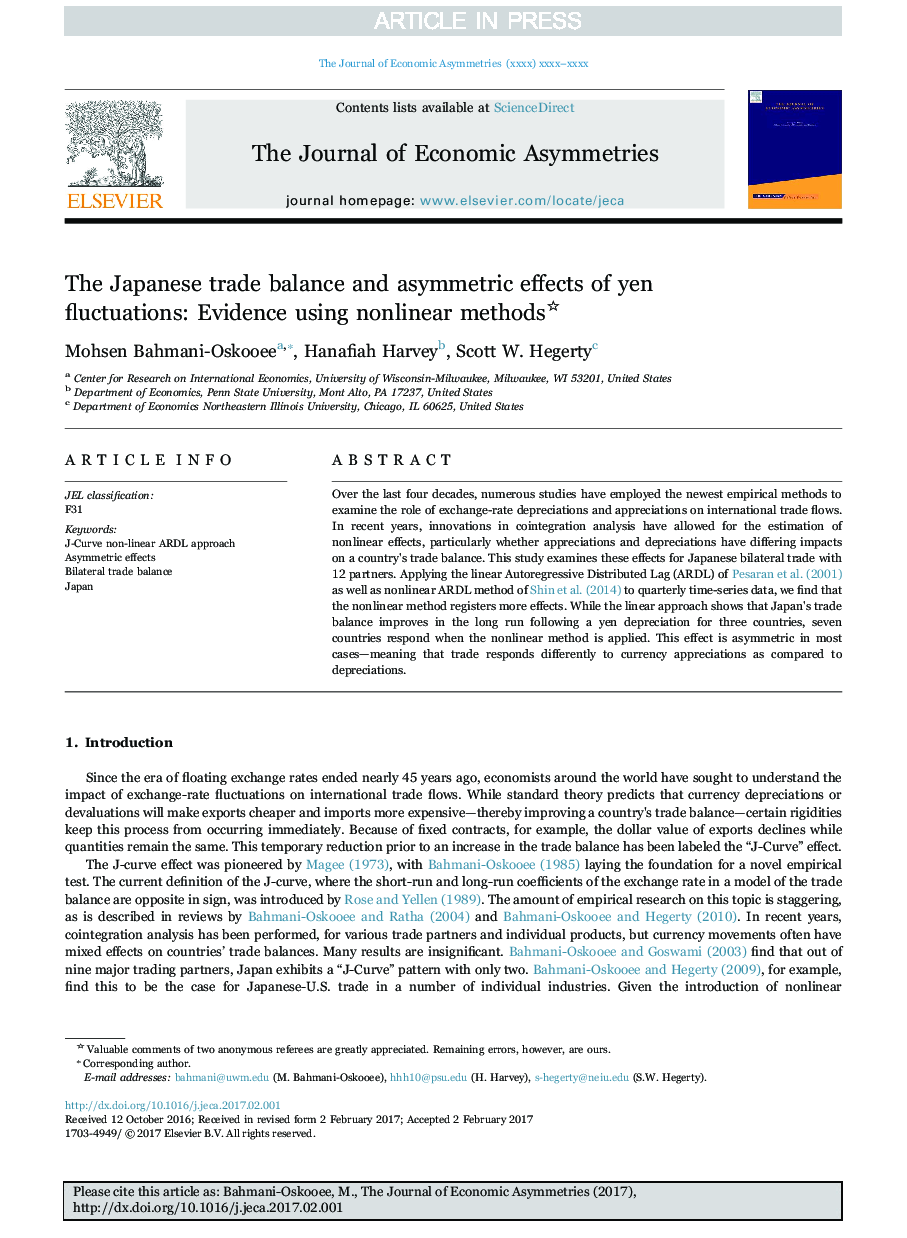| Article ID | Journal | Published Year | Pages | File Type |
|---|---|---|---|---|
| 5097668 | The Journal of Economic Asymmetries | 2017 | 8 Pages |
Abstract
Over the last four decades, numerous studies have employed the newest empirical methods to examine the role of exchange-rate depreciations and appreciations on international trade flows. In recent years, innovations in cointegration analysis have allowed for the estimation of nonlinear effects, particularly whether appreciations and depreciations have differing impacts on a country's trade balance. This study examines these effects for Japanese bilateral trade with 12 partners. Applying the linear Autoregressive Distributed Lag (ARDL) of Pesaran et al. (2001) as well as nonlinear ARDL method of Shin et al. (2014) to quarterly time-series data, we find that the nonlinear method registers more effects. While the linear approach shows that Japan's trade balance improves in the long run following a yen depreciation for three countries, seven countries respond when the nonlinear method is applied. This effect is asymmetric in most cases-meaning that trade responds differently to currency appreciations as compared to depreciations.
Related Topics
Social Sciences and Humanities
Economics, Econometrics and Finance
Economics and Econometrics
Authors
Mohsen Bahmani-Oskooee, Hanafiah Harvey, Scott W. Hegerty,
